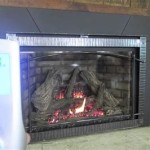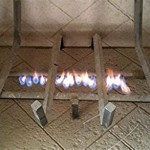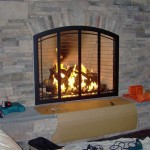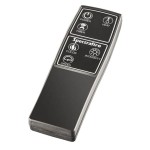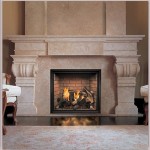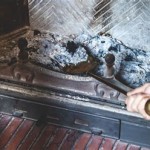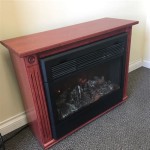How To Install Stone Veneer Fireplace Over Brick
Installing stone veneer over an existing brick fireplace is a popular way to update the look of a living space. It allows for a significant aesthetic transformation without the major demolition required for a complete fireplace rebuild. This process, while potentially manageable for experienced DIYers, does require careful planning, preparation, and execution to ensure a safe and lasting result. This article will outline the steps involved in installing stone veneer on top of a brick fireplace, providing guidance on materials, tools, and techniques.
Before starting any project, ensuring the structural integrity of the current system is paramount. A complete inspection of the existing brick fireplace is vital. Look for cracks, loose mortar, or any signs of deterioration. Address any structural problems before applying stone veneer. Ignoring these issues can compromise the new veneer installation and potentially create a dangerous situation later. Consult with a professional if any doubts arise regarding the fireplace's structural soundness.
Properly cleaning the brick surface is also a critical step. Removing dirt, soot, and any loose debris allows for optimal adhesion of the mortar. A wire brush and a solution of soap and water are usually sufficient. Rinse the brick thoroughly to eliminate any soapy residue. Let the brick completely dry before proceeding.
Key Point 1: Preparing the Brick Surface and Gathering Materials
The success of a stone veneer installation hinges on proper surface preparation. After cleaning, apply a scratch coat of mortar to the brick. This provides a textured surface that the stone veneer adheres to more effectively. Use a notched trowel to apply a thin, even layer of mortar, creating grooves as you go. Allow the scratch coat to dry completely, typically for 24-48 hours, before beginning the stone veneer installation.
Selecting the appropriate type of stone veneer is crucial. Both manufactured and natural stone veneers are available, each with its own aesthetic and performance characteristics. Manufactured stone is lighter and generally easier to work with, while natural stone offers a unique, organic look. Choose a veneer that complements the overall design of the room and is specifically designed for fireplace applications.
Gathering the necessary tools and materials is another vital aspect of the preparation phase. This includes: stone veneer, mortar (specifically formulated for stone veneer), a notched trowel, a level, a wet saw (for cutting the stone), a rubber mallet, safety glasses, gloves, a mixing bucket, and a sponge. Having everything on hand before beginning the installation streamlines the process and minimizes delays.
Key Point 2: Installing the Stone Veneer
The installation of the stone veneer requires careful attention to detail. Start at the base of the fireplace and work upwards. Apply a generous layer of mortar to the back of each stone veneer piece using the notched trowel. Press the stone firmly into the scratch coat, ensuring good contact with the mortar. Wiggle the stone slightly to help it set and create a strong bond.
Maintain consistent joint spacing between the stones. This can be achieved using spacers or by carefully eyeballing the spacing. A level is essential for ensuring that the stones are installed straight and plumb. Use a rubber mallet to gently tap the stones into place, making sure they are flush with each other.
Cutting the stone veneer to fit around corners and edges is often necessary. A wet saw is the recommended tool for this task, as it provides clean, precise cuts. Always wear safety glasses when operating a wet saw. Carefully measure and mark the stone before cutting, and take your time to avoid mistakes. Dry-fit the cut pieces before mortaring them into place to ensure a proper fit.
Work in small sections to prevent the mortar from drying out before the stones are set. If any mortar squeezes out from between the stones, remove it immediately with a damp sponge. Be careful not to smear the mortar on the face of the stone veneer.
Key Point 3: Mortar Jointing and Finishing Touches
Once the stone veneer is installed, the mortar joints need to be filled and finished. This process, known as "pointing," enhances the aesthetic appeal of the fireplace and helps to seal the joints against moisture and debris.
Allow the mortar behind the stone veneer to cure for at least 24 hours before pointing the joints. Use a grout bag or a small trowel to carefully fill the joints with mortar. Avoid overfilling the joints, as this can make them difficult to clean and detract from the overall look.
Once the joints are filled, use a jointing tool to create a consistent and professional finish. Several different jointing styles are available, such as concave, V-shaped, and flush. Choose a style that complements the stone veneer and the overall design of the room. A damp sponge can be used to smooth and clean the joints as needed.
Allow the mortar joints to cure completely before using the fireplace. Refer to the mortar manufacturer's instructions for specific curing times. Applying a sealant to the stone veneer can help protect it from staining and weathering. Choose a sealant that is specifically designed for stone and follow the manufacturer's instructions carefully.
Finally, clean the surrounding area and inspect the finished fireplace for any imperfections. Address any issues promptly to ensure a long-lasting and aesthetically pleasing result. Consider adding decorative elements, such as a mantel or fireplace screen, to further enhance the look of the fireplace.
This guide provides a general overview of how to install stone veneer over a brick fireplace. Consulting with a professional contractor or mason is recommended if one lacks experience in masonry work or if the project presents any unique challenges. Always prioritize safety and follow all applicable building codes and regulations.

Installing Stone Veneer Over A Brick Fireplace Grand River

Stone Veneer Over A Brick Fireplace Updates The Look

Stone Veneer Over A Brick Fireplace Updates The Look

Can You Put Stone Veneer Over Brick

Stone Veneer Over A Brick Fireplace Updates The Look

Installing Stone Veneer Over A Brick Fireplace Grand River

Walter S Diy Chimney Remodel Stone Over Brick Genstone

How To Install Thin Brick Veneers On Your Fireplace

Transform Your Home Stone Veneer Over Brick Fireplace Guide

Fireplace Facelift Using Natural Stone Veneer
Related Posts

